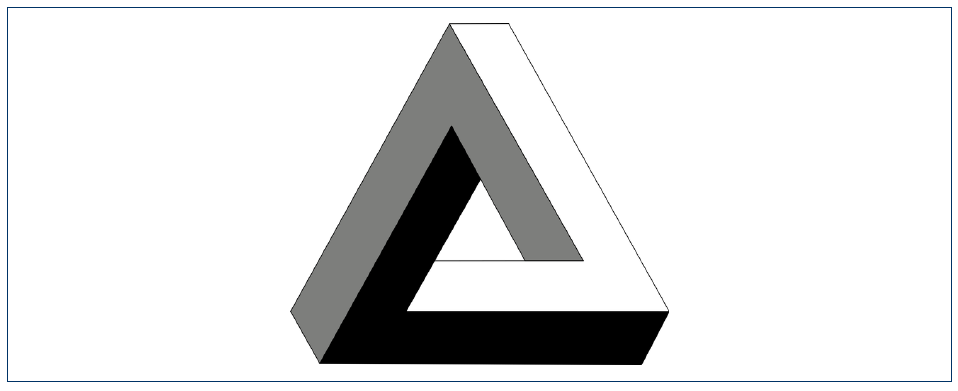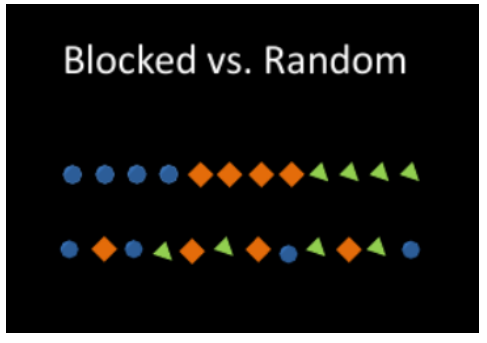Paradoxes in Teaching
Published on Dec 18, 2018 by Martin Kvist, M.Sc..
Motor learning paradoxes, and their implications for teaching.
When we begin to take a closer look at learning and teaching, we are quickly faced with some paradoxical phenomena. The definition of a paradox is, a seemingly absurd or contradictory statement or proposition which when investigated may prove to be well founded or true. We are conditioned to a linear way of thinking, when it comes to teaching sports, perfect practice makes perfect, and more is better seem to be widely accepted slogans. However an increasing amount of empirical evidence are stating that the opposite is actually true, order out of chaos and less is more. We are faced with paradoxical phenomenon that at first can seem challenging to grasp as a teacher, but when examined closer can inform our teaching. In this article I will try to clarify a few of the paradoxes we are often faced with while teaching, and how to turn this understanding into valuable tools to inform our choices of teaching methods and tools. .

Order out of chaos
The first paradoxical phenomenon is “order out of chaos”. Based on motor-learning research, the first paradoxical principle states that interference and variability embedded in the practice environment may facilitate lasting learning even though they may create setbacks for initial learning. Our understanding of this phenomena originates from Schmidt’s schema theory, that postulates;
practicing variations of a movement (variable practice) will be of benefit when the movement must later be recalled (retention) or when producing a novel form of movement (transfer) \cite{Schmidt1975}.
Two established research findings related to this type of paradox are the contextual interference effect \cite{Shea1979} and the variability effect \cite{Schmidt1975}, \cite{Moxley1979}.

Contextual interference
The contextual interference effect in motor learning refers to the interference that results from practising a task within the concept of other tasks in a practice session. Several studies have shown that practice under conditions of high contextual interference, with a random practice order, degrades performance during acquisition trials, compared to low contextual interference conditions, with a blocked order, where practice is completed on one task before practice on another task is undertaken. In contrast to acquisition performance, random practice usually leads to more effective learning than blocked practice, as measured by retention and transfer tests \cite{Timothy1992}.
The variability effect
Research findings show that less variability produces better
short-term benefits while more variability is often associated with
better long-term retention and transfer effects
\cite{Edwards1985},\cite{Proteau1994}. Random practice increases the
difficulty level of performance, thus producing a temporary setback in
performance, but it may increase long-term retention rates
\cite{Shea1979}, \cite{Lin2008}, \cite{Lin2009}.
Opposing arguments?
There exist two opposing arguments in the above paradoxical phenomena,
contextual interference and the variability effect.
- One argument states that increased contextual interference or variability decreases initial performance.
- The second, opposing argument states that increased contextual interference or variability increases lasting retention.
These counterintuitive findings are perplexing to most of us who are
conditioned to linear thinking patterns, such as “what starts well ends
well.” To apply this principle in teaching, it is important to remember that
the level of interference and variability should be compatible with
age, skill level, time allotted for practice, and instructional
resources. Knowing the pros and cons of each argument in the paradox
allows the student and teacher to move to the next stage of resolving
the paradox. High contextual interference resulting from introducing multiple tasks
and placing high variability demands on students for quick reactions
tend to favor older, more skilled students who are provided with a lot
of support \cite{Chen2011}.
As an example, blocked practice may be instrumental for beginners to develop a stable pattern of movement, but it may also prevent students from moving to the next stage of expertise. Random practice is difficult for beginners who have not mastered the mechanics of basic skills, but it may promote specificity of training for highly skilled athletes.
To increase the amount of contextual interference or chaos, the
teacher may increase the degree of unpredictability in presenting
multiple skills during practice (i.e., random practice). To lower
contextual interference, the teacher can use a blocked practice
schedule in which only one skill is drilled over and over until it is
mastered before moving on to another skill \cite{Chen2011}.
Less is more..
The second paradoxical phenomena is “Less is more” as with “order out of chaos” it is a perplexing phenomena for most teachers. The main responsibility of teachers and coaches is to provide guidance for students and athletes in the form of verbal instructions, and feedback about the results of their performances. Guidance normally conjures up positive connotations, for it is associated with improvement. “More is better” is often the motto. We want our students to perform well, so the temptation is to provide them with as much guidance as possible. However, motor-learning research has proven that excessive guidance harms long-term learning, while reduced guidance can facilitate it \cite{Salomi1984}. In my experience with coaching teachers this is often where I see less experienced teachers struggle the most, they are so eager to help their students succeed that they forget this important paradox and it’s implications.
Understanding paradoxes such as “less is more” can improve teaching effectiveness.
– David Chen
The guidance hypothesis
In my previous article on motivation I touched upon how adopting a more question based approach to teaching can help our students develop problem solving skills, promote motivation and increase autonomy. The guidance hypothesis \cite{Schmidt1991}, which has been empirically supported, states that providing external feedback too frequently may lead to a student’s dependence on the feedback, resulting in failure to process his or her own internal feedback. Therefore, it is recommended that instructors reduce the amount of guidance as learning progresses \cite{Chen2011}. Switching from a deductive or direct instruction based approach to a more Inductive method of teaching is an effective strategy to reduce our students reliance on feedback, improve problem solving skills, and increase autonomy. A similar strategy involving a question based approach would be to make use of the coaching method. In coaching, fundamentally, the coach is helping the individual to improve their own performance, and thus relies on a question based approach.
Coaching is unlocking a person’s potential to maximise their own performance. It is helping them to learn rather than teaching them.
– John Whitmore, in Coaching for Performance.
Good coaches believe that the individual always has the answer to their own problems but understands that they may need help to find the answer.
The benefits of reducing guidance for motor learning have been empirically verified and can take the following forms:
- (1) decrease the frequency of feedback, and support the students in finding the answer to their own problems.
- (2) delay the time interval between performance and feedback, or transition to posing questions that forces students to tune in to their internal feedback.
- (3) provide more autonomy for students to solve problems.
Decreased guidance forces students to tune in to their internal feedback and develop more effective strategies for coping with emerging problems in the learning environment \cite{Chen2011}.
Creative paradoxical thinking - summary
If we engage in a bit of creative paradoxical thinking, we can couple the above
motor learning paradoxes with different methods of teaching, providing us with a clear guide of when and how
to choose between our different teaching methods and tools. For
example with beginners we can choose to use a direct instruction, frequent feedback, and blocked practice approach, to
support our students initial acquisition. As the learning progresses,
we can transition to a inductive approach, decrease the frequency of
our feedback, and use random practice with a high contextual interference, to
support retention and transfer for our more experienced students.
Understanding the implications of these paradoxes , order out of
chaos and less is more can help inform our teaching, if we start
paying close attention to our students progress we can choose the
right approach at the right time.
- Using blocked practice to help beginners develop stable movement patterns,
- Random practice to promote specificity of training for more experienced students.
- Decreasing our guidance and adopting a question based approach, to
help more experienced students progress and develop their problem
solving skills.
By doing so, we create an optimal learning environment for our students by carefully matching their experience, skill level and our instructional resources to their learning conditions.
Acknowledgments
This article is inspired by David Chen’s 2011 article Creative paradoxical thinking and it’s implications for teaching and learning I highly recommend anyone interested in these paradoxes to check it out!